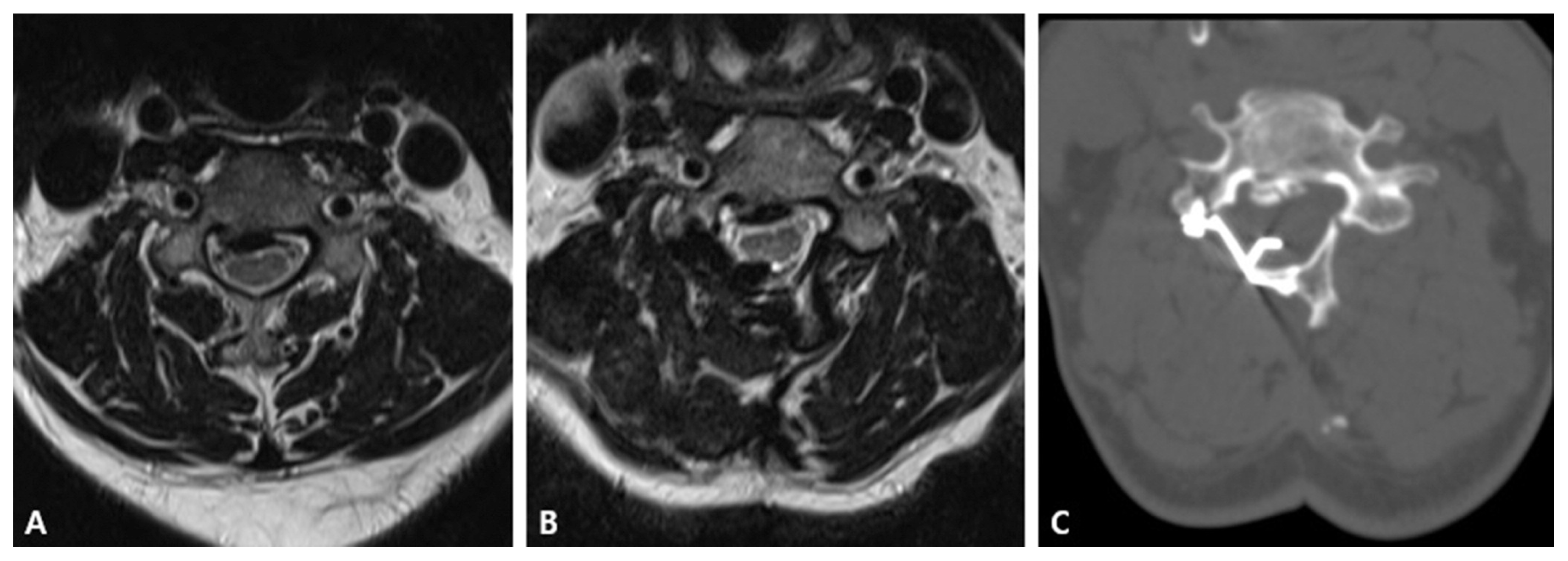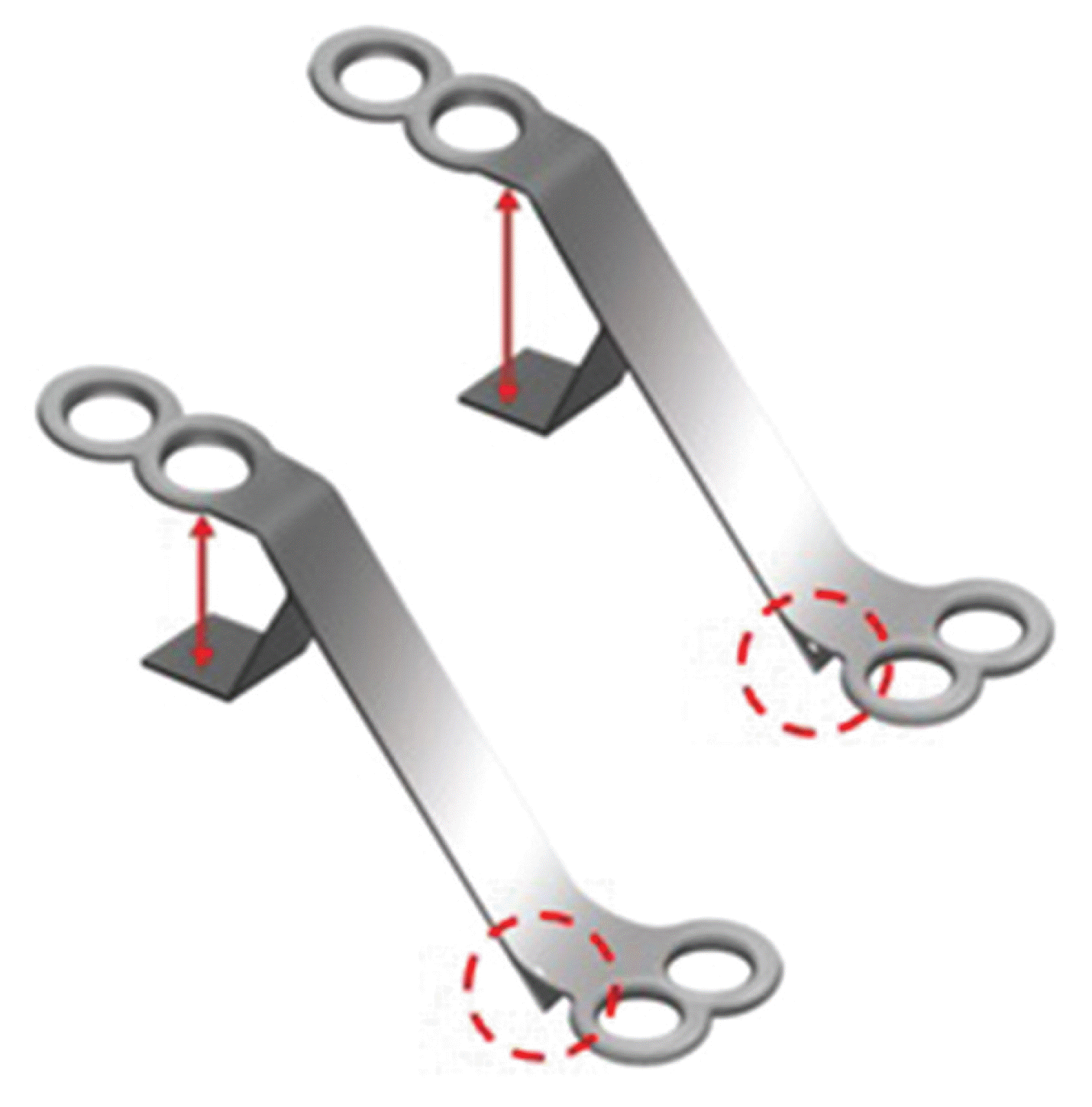1. Hur JW, Park YK, Kim BJ, Moon HJ, Kim JH. Risk Factors for Delayed Hinge Fracture after Plate-Augmented Cervical Open-Door Laminoplasty. J Korean Neurosurg Soc. 2016; 59:368–73.

2. Hirabayashi K, Watanabe K, Wakano K, Suzuki N, Satomi K, Ishii Y. Expansive open-door laminoplasty for cervical spinal stenotic myelopathy. Spine (Phila Pa 1976). 1983; 8:693–9.

3. Chen HC, Chang MC, Yu WK, Wang ST, Liu CL, Chen TH. Lateral mass anchoring screws for cervical laminoplasty: preliminary report of a novel technique. J Spinal Disord Tech. 2008; 21:387–92.
4. Goto T, Ohata K, Takami T, Nishikawa M, Tsuyuguchi N, Morino M, et al. Hydroxyapatite laminar spacers and titanium mini-plates in cervical laminoplasty. J Neurosurg. 2002; 97:323–9.

5. Lin X, Chen K, Tang H, Huang X, Wei C, Xiao Z. Comparison of anchor screw fixation versus mini-plate fixation in unilateral expansive open-door laminoplasty for the treatment of multi-level cervical spondylotic myelopathy. Medicine (Baltimore). 2018; 97:e13534.

6. Nakano K, Harata S, Suetsuna F, Araki T, Itoh J. Spinous Process-Splitting Laminoplasty Using Hydroxyapatite Spinous Process Spacer. Spine. 1992; 17:S41–S3.

7. Lee DG, Lee SH, Park SJ, Kim ES, Chung SS, Lee CS, et al. Comparison of surgical outcomes after cervical laminoplasty: open-door technique versus French-door technique. J Spinal Disord Tech. 2013; 26:E198–203.
8. Park AE, Heller JG. Cervical laminoplasty: use of a novel titanium plate to maintain canal expansion--surgical technique. J Spinal Disord Tech. 2004; 17:265–71.
9. Wang LN, Wang L, Song YM, Yang X, Liu LM, Li T. Clinical and radiographic outcome of unilateral open-door laminoplasty with alternative levels centerpiece mini-plate fixation for cervical compressive myelopathy: a five-year follow-up study. Int Orthop. 2016; 40:1267–74.

10. Wang HQ, Mak KC, Samartzis D, El-Fiky T, Wong YW, Luo ZJ, et al. “Spring-back” closure associated with open-door cervical laminoplasty. Spine J. 2011; 11:832–8.

11. Kanemura A, Doita M, Iguchi T, Kasahara K, Kurosaka M, Sumi M. Delayed dural laceration by hydroxyapatite spacer causing tetraparesis following double-door laminoplasty. J Neurosurg Spine. 2008; 8:121–8.

12. Derenda M, Kowalina I. Cervical laminoplasty--review of surgical techniques, indications, methods of efficacy evaluation, and complications. Neurol Neurochir Pol. 2006; 40:422–32. discussion 33.
13. Liu G, Buchowski JM, Riew KD. Screw Back-Out Following “Open-Door” Cervical Laminoplasty: A Review of 165 Plates. Asian Spine J. 2015; 9:849–54.

14. Chen H, Li H, Wang B, Li T, Gong Q, Song Y, et al. Facet joint disturbance induced by miniscrews in plated cervical laminoplasty: Dose it influence the clinical and radiologic outcomes? Medicine (Baltimore). 2016; 95:e 4666.





 PDF
PDF Citation
Citation Print
Print




 XML Download
XML Download